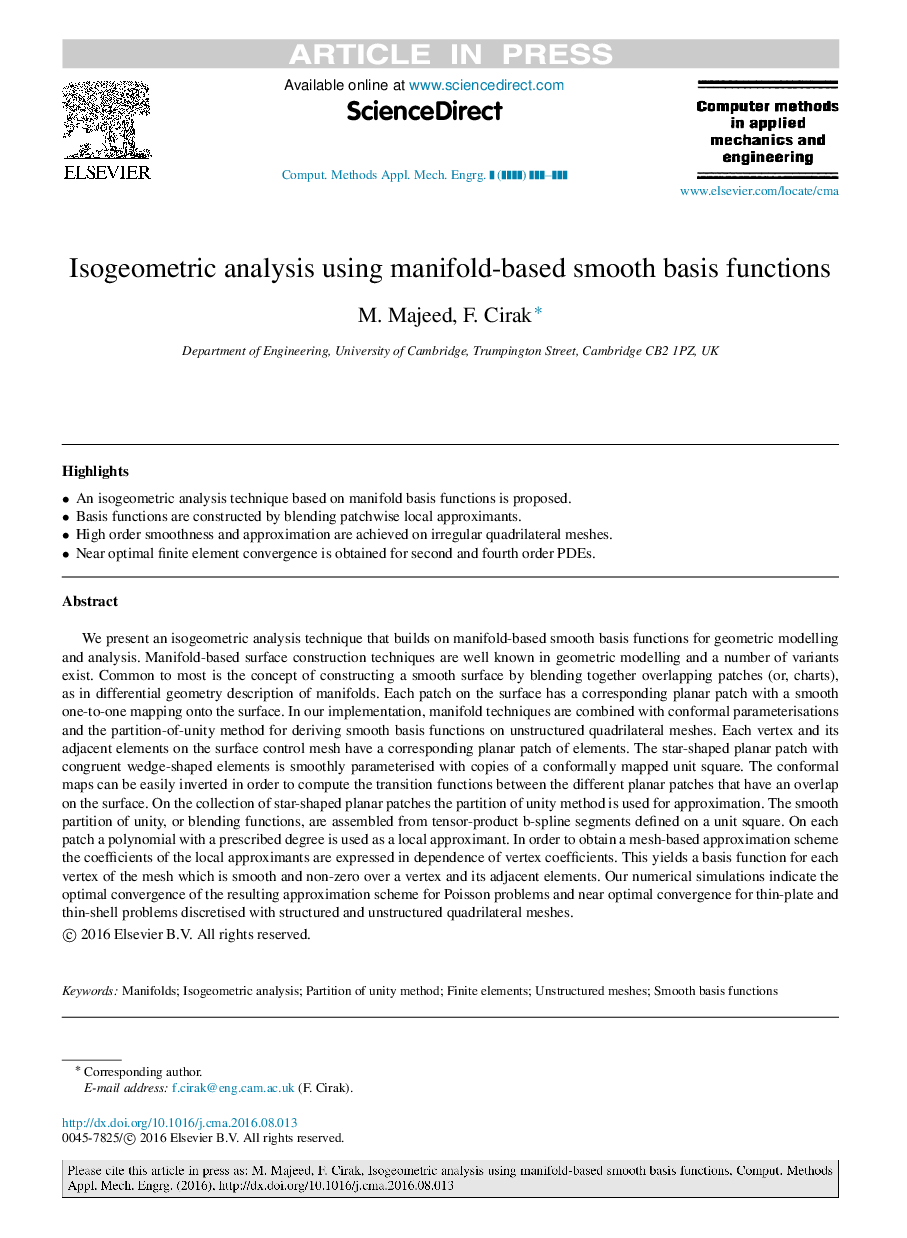| Article ID | Journal | Published Year | Pages | File Type |
|---|---|---|---|---|
| 4964222 | Computer Methods in Applied Mechanics and Engineering | 2017 | 21 Pages |
Abstract
We present an isogeometric analysis technique that builds on manifold-based smooth basis functions for geometric modelling and analysis. Manifold-based surface construction techniques are well known in geometric modelling and a number of variants exist. Common to most is the concept of constructing a smooth surface by blending together overlapping patches (or, charts), as in differential geometry description of manifolds. Each patch on the surface has a corresponding planar patch with a smooth one-to-one mapping onto the surface. In our implementation, manifold techniques are combined with conformal parameterisations and the partition-of-unity method for deriving smooth basis functions on unstructured quadrilateral meshes. Each vertex and its adjacent elements on the surface control mesh have a corresponding planar patch of elements. The star-shaped planar patch with congruent wedge-shaped elements is smoothly parameterised with copies of a conformally mapped unit square. The conformal maps can be easily inverted in order to compute the transition functions between the different planar patches that have an overlap on the surface. On the collection of star-shaped planar patches the partition of unity method is used for approximation. The smooth partition of unity, or blending functions, are assembled from tensor-product b-spline segments defined on a unit square. On each patch a polynomial with a prescribed degree is used as a local approximant. In order to obtain a mesh-based approximation scheme the coefficients of the local approximants are expressed in dependence of vertex coefficients. This yields a basis function for each vertex of the mesh which is smooth and non-zero over a vertex and its adjacent elements. Our numerical simulations indicate the optimal convergence of the resulting approximation scheme for Poisson problems and near optimal convergence for thin-plate and thin-shell problems discretised with structured and unstructured quadrilateral meshes.
Related Topics
Physical Sciences and Engineering
Computer Science
Computer Science Applications
Authors
M. Majeed, F. Cirak,
